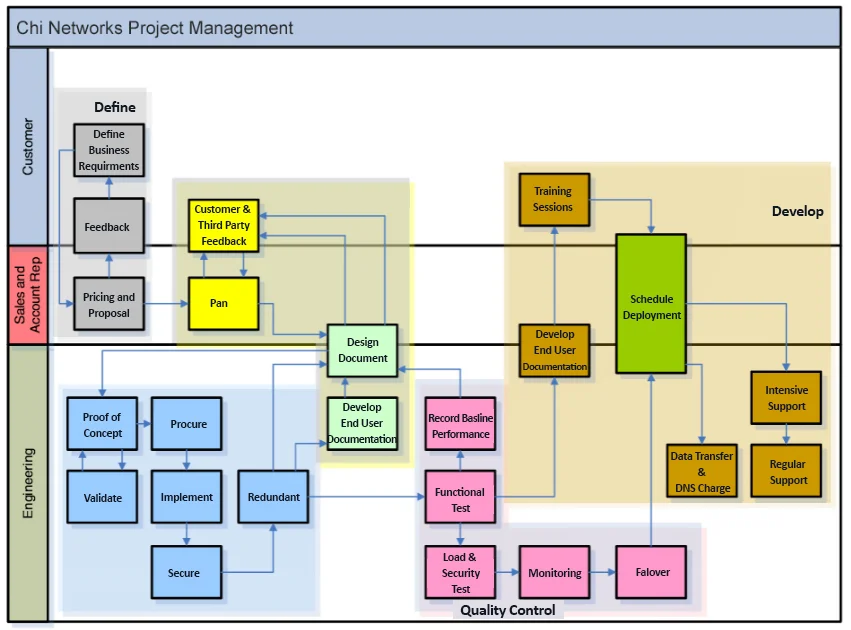Project design, deployment and management. It all begins with a clear understanding of your business needs: with where you are now and where you want to be. Simple as that. We listen. Very Closely. Then we design, build and maintain the IT system that gets you where you want to be. With your input all along the way.
Strong Communication. We use a closed loop version of the Waterfall system to keep communication and projects moving forward. It’s structured and inclusive. During all five stages of the design process (see right), it ensures smooth deployments informed by Customer, End User and technician feedback, all facilitated by coordinated, multiparty ways of exchanging, processing and prioritizing information. The chart below shows how this system works from project definition to deployment:


The Chi Networks Solution Team first meets with the Customer to learn about short and long-term business priorities and discuss IT options that will advance them most effectively.

With continuous input the Customer’s design team, the Chi Networks Solution Team designs and documents the Customer’s IT system. The design process includes input from Chi Networks’ Engineering and Project Management Staff. Customer gives final approval of design.

The Implementation process for a large deployment requires a Proof of Concept to ensure final deployment success. Redundancy and Security measures are developed and thoroughly tested.

We work closely with the Customer and End Users to ensure that large scale deployments are properly tested prior to deployment.

We work with End Users and tech writers to develop End User documentation as required. After deployment is scheduled, the final data is synced to the new system. We allocate substantial additional resources for support – sometimes onsite – to ensure that all End Users have the adequate support during a transition.




